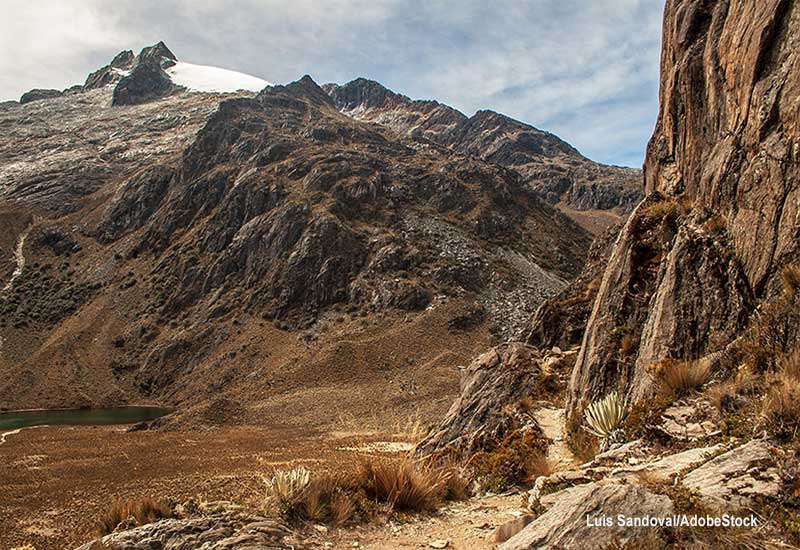At the beginning of May 2024, the disappearance of the Humboldt Glacier, the last ice mass of its type in our country, made news. It was located in Mérida, in the Sierra Nevada of the same name. The Humboldt was the last Venezuelan glacier… and the first to disappear in the world.
Our mountains will no longer have their white coats. We will also not have any more ice melts, simply because the glaciers are no longer with us.
The first mention we find of “Las Sierras Nevadas” is due to Father Pedro de Aguado[1], one of the first historians of Venezuela:
“(..) how the governor (Juan Pérez de Tolosa, c.1490-1549) sent Alonso Pérez de Tolosa, his brother, with people to discover the Sierras Nevadas, where Mérida, of the New Kingdom, is populated today.”
Glaciers are not only beautiful landscapes to contemplate, do tourism or practice sports. Many people don’t know that glaciers are the world’s natural air conditioners. In addition, they are one of the largest reservoirs of fresh water on Earth. Its waters are the sources of a good number of the planet’s rivers. Water consumption for animals, plants and industrial use depends on glaciers.
A glacier is defined as a significant volume of moving ice and snow, which originates from the compaction of snow. This happens when the annual snowfall exceeds that melted during the summer months, therefore, this happens with greater intensity and frequency in the areas closest to the poles.
Glaciers originate from the compaction and crystallization of snow accumulated in cold places.
A glacier takes thousands of years to form, however, due to the constant increase in Earth’s temperature in this 21st century, glaciers are melting in a few decades. The main cause of melting ice is global warming, as will its consequence, since the fewer the number of glaciers, the more global warming there will be, unless climate change can be reversed.
The glaciers have been receding for more than fifty years. Human activity is most responsible for this, mainly due to the emission of CO2 and other gases, deforestation, pollution of the oceans, and having surpassed several of the nine limits of the Earth.
The frozen formations located north of the Andes are known as “equatorial glaciers”, and until now they have been the most sensitive to the rapid decrease in their masses, precisely due to their tropical location, through global warming.
The glacier “issue” will be in the news for a few weeks, but then, like so many other important issues, it will unfortunately fall into oblivion.
What should remain reverberating is the Humboldt bell for other countries.
According to UNESCO, these are the nations that still have glacial mass, but that will see their glaciers disappear before 2050:
- Glaciers of the Alerces National Park (Argentina).
- Glaciers of the Huascarán National Park (Peru).
- Glaciers of Yellowstone National Park (United States of America).
- Glaciers of Yosemite National Park (United States of America).
Waterton Glacier International Peace Park (Canada) – They have lost 26.5% of their volume in 20 years (26.5%)
These are some of the glaciers and their areas that survive in South America:
- Chile, with about 2500 km2
- Argentina 2000 Km2
- Peru 1250 Km2
- Bolivia 340 Km2
- Ecuador 42 km2
- Colombia 37 Km2
“Venezuela may be first nation to lose all its glaciers,” according to the BBC headline, dated May 9, 2024.
In the same number we read:
“It makes us very sad because Mérida has always been the City of Eternal Snow”, in the words of Luis Daniel Llambi , a researcher at the University of the Andes (Venezuela) who has been studying the Humboldt Glacier for years.
We also see: “scientists, who have long predicted the disappearance of Humboldt, estimate that rising temperatures will also leave Colombia and Ecuador without glaciers by 2050.”
To complete this information, please visit our FAQs about Glaciers:
What are glaciers, how long do they take to form and retreat? What is the difference between a glacier, an iceberg and an ice pack? What benefits do glaciers provide us? Why are glaciers and other ice the Earth’s sunscreens? What would happen if all the glaciers on Earth melted? Did you know that Venezuela is the first country in the world to lose its last glacier? Are glaciers receding? How many glaciers are there on Earth and which are the highest? What are the most notable glaciers in America? What other planets in the Solar System have glaciers?
Sandor Alejandro Gerendas-Kiss
SGK-PLANET Editor
[1] Fray Pedro de Aguado. Recopilación Historial de Venezuela. Tomo I. Biblioteca de la Academia Nacional de la Historia. Fuentes de la Historia Colonial de Venezuela. 1987. Vol. N° 62, pag. 289







Leave A Comment